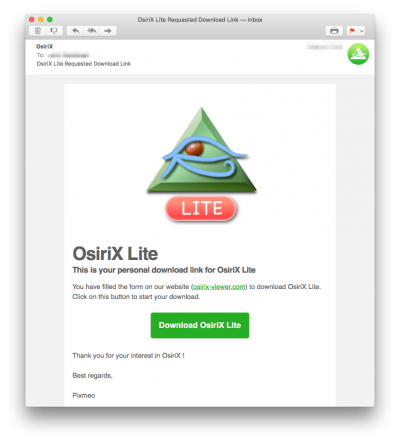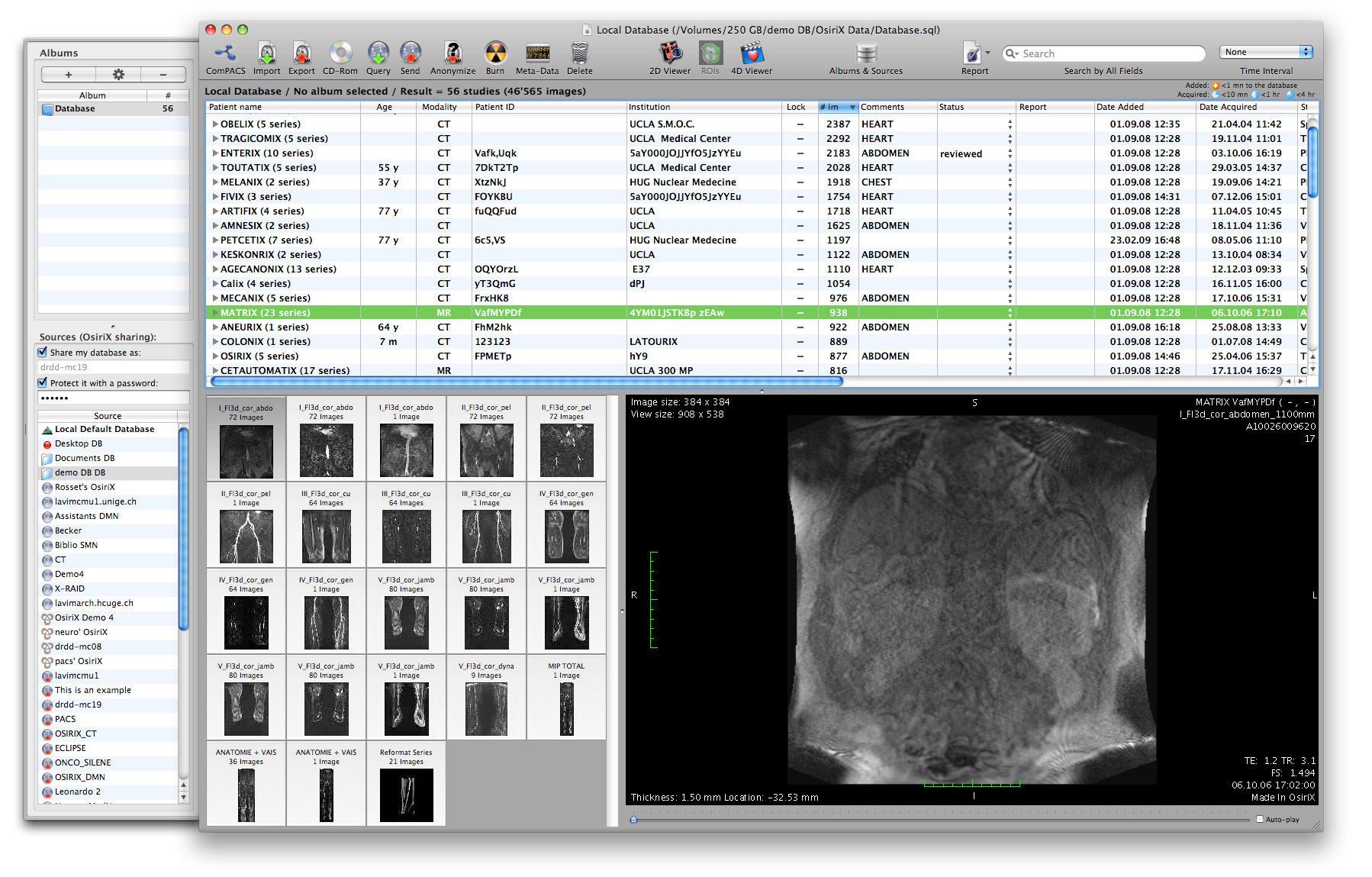OsiriX Lite for Mac is an image processing software dedicated to DICOM images ('.dcm' / '.DCM' extension) produced by medical equipment (MRI, CT, PET, PET-CT,.) and confocal microscopy (LSM and BioRAD-PIC format). It can also read many other file formats: TIFF (8,16, 32 bits), JPEG, PDF, AVI, MPEG and Quicktime.It is fully compliant with the DICOM standard for image communication and image. The Witcher Adventure Game. Life.gelmoopiruktahum.tk, quotes.sparareninperva.cf, No thanks Submit review. Intelligent Antivirus Detect and block viruses, malware, spyware, ransomware and phishing. Smart Scan Find unsafe settings and passwords, suspicious add-ons and out-of-date software. Softonic-recensie Advertentie.
OsiriX Lite enables you to view your medical images at home. The installation is quick and easy. Once installed, OsiriX Lite will automatically import and display your medical images. With OsiriX Lite, you can save and share your medical images to easily show your images to your healthcare providers and keep them handy for later reference. Osirix free download - OsiriX MD, OsiriX HD, Navegatium DICOM Viewer for Windows 10, and many more programs.
| Original author(s) | Antoine Rosset |
|---|---|
| Developer(s) | Pixmeo |
| Initial release | April 23, 2004 (1.0.0)[1] |
| Stable release | 10.0.0(October 1, 2018; 2 years ago) [±] |
| Preview release | none[±] |
| Written in | Objective-C |
| Operating system | MacOS X |
| Type | Imaging informatics software |
| License(s) | GNU Lesser General Public License v3.0 |
| Website | osirix-viewer.com |
OsiriX is free open-source image processing software for managing DICOM images produced by radiology and nuclear imaging, functional imaging, 3D imaging, confocal microscopy, and molecular imaging. OsiriX also acts as a DICOM-compatible picture archiving and communication system (PACS) workstation for imaging.[2] The product is also offered as a commercial product, with a 64-bit and an FDA-approved professional version available for purchase.
- 1Product history
Product history
OsiriX started out in November 2003 as a UCLA grant project of Antoine Rosset dedicated to learning about imaging informatics and writing 'a small software program to convert DICOM files to a QuickTime movie file.'[3] The project idea expanded to an open-source project, with a SourceForge project page being created on April 16, 2004.[4] Shortly afterwards, on April 23, a stable version 1.0 of the software was released.[1]
In March 2009, Rosset and his colleagues created the OsiriX Foundation to promote open-source software in Medicine. A year later the group spun off a new company called Pixmeo to certify OsiriX as a FDA-approved PACS and provide commercial support for OsiriX and other open-source solutions.[3]


Awards
In June 2005, the software was awarded 'Best Use of Open Source' and runner-up for 'Best Mac OS X Scientific Computing Solution' in the Apple Design Awards.[5]
Features
- DICOM file support
- DICOM network support
- Non-DICOM file support, including LSM, BioRadPIC, ANALYZE, TIFF, JPG, PNG, PDF, Quicktime, etc.
- 2-D viewer
- 3-D post-processing tools
- Optimized
- Extensible


For all features, see the 'About' page.
Osirix Lite Mac Update
Hardware/software requirements
The installation requirements for OsiriX include[6]:

- MacOS X 10.8 or higher
- Intel processor
For best performance, the following memory requirements should be met:
- 6 GB of RAM if you plan to open more than 800 images (CT & MRI, PET-CT)
- 8 GB of RAM for more than 1500 images (multi-slice CT & PET-CT) with OsiriX-64 bit
- 12 GB of RAM for more than 3000 images (cardiac or functional imaging) with OsiriX-64 bit
Videos, screenshots, and other media
- Online user guide
- DICOM sample image sets
- OsiriX instructional videos
Osirix Lite Tutorial
Entities using OsiriX
A list of OsiriX users can be found here.
Further reading
External links
- OsiriX Lite download link (registration required)
References
Osirix Md
- ↑ 1.01.1'Software Releases: Fri 23 Apr 2004'. Mac Aggregate Tracker. Subsume Technologies, Inc. 23 April 2004. http://mat.subsume.com/2004/04/23.html. Retrieved 10 June 2014.
- ↑'OsiriX Imaging Software - About OsiriX...'. Pixmeo. http://www.osirix-viewer.com/AboutOsiriX.html. Retrieved 10 June 2014.
- ↑ 3.03.1'Chapter 1: Introduction' (PDF). OsiriX User Guide. Pixmeo. pp. 1–3. http://www.osirix-viewer.com/UserManualIntroduction.pdf. Retrieved 10 June 2014.
- ↑'OsiriX'. SourceForge. http://sourceforge.net/projects/osirix/. Retrieved 10 June 2014.
- ↑Cohen, Peter (10 June 2005). 'WWDC: Apple Design Award 2005 winners announced'. Macworld. IDG Consumer & SMB. http://www.macworld.com/article/1045262/design.html. Retrieved 10 June 2014.
- ↑'OsiriX Imaging Software - Downloads'. Pixmeo. http://www.osirix-viewer.com/Downloads.html. Retrieved 10 June 2014.
Osirix Lite Free Download
